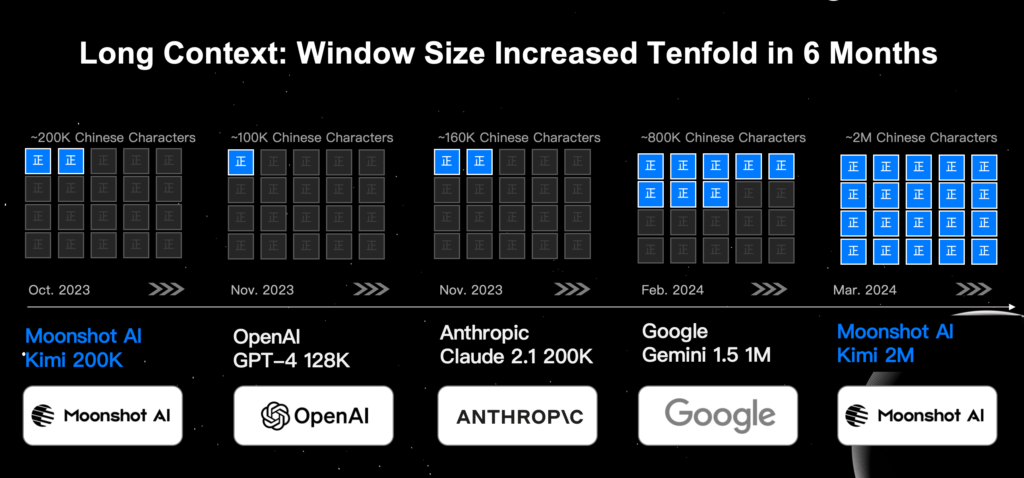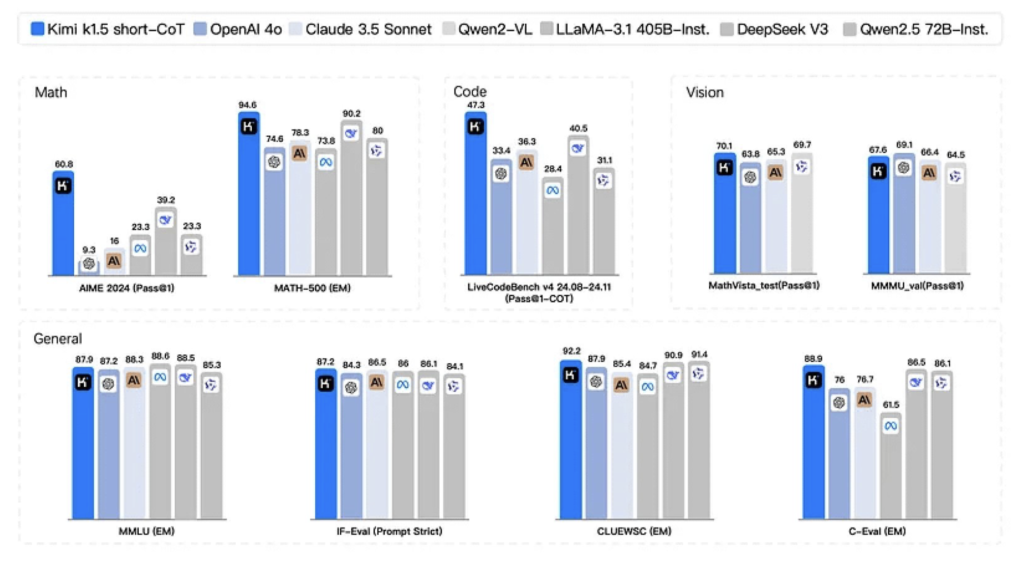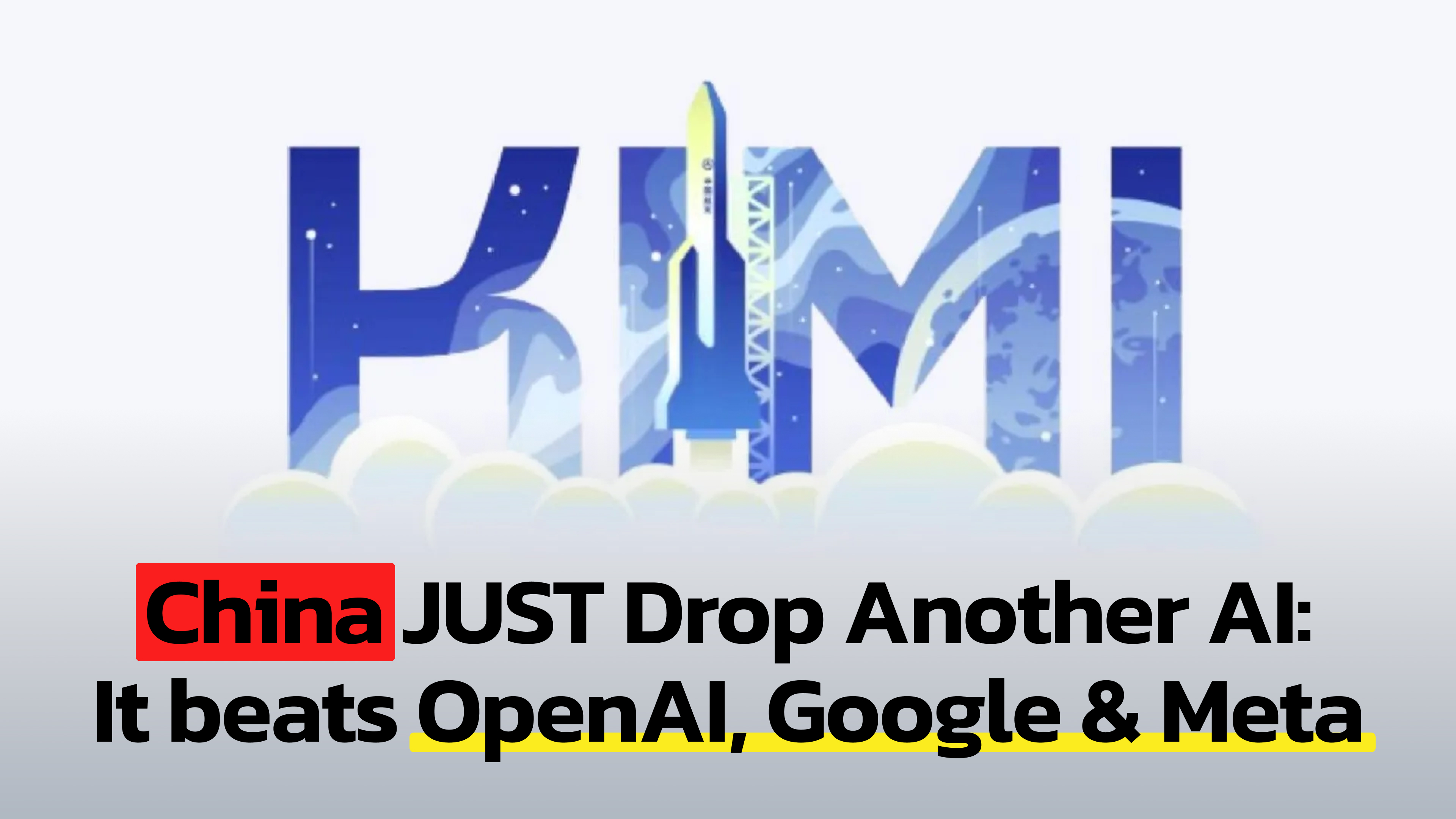Artificial intelligence innovation is moving fast, and a new player has just entered the arena. Kimi AI 1.5, developed by the Chinese startup Moonshot AI, is gaining traction as the next big thing in AI. Offering free, powerful capabilities that surpass both OpenAI and DeepSeek models, Kimi might just be the model to shake up the entire industry.
Here’s a breakdown of everything you need to know about this fast-rising AI disruptor.
Moonshot AI
Founded in March 2023 by Yang Zhilin, Zhou Xinyuet Wu Yuxin, Moonshot AI might be a newcomer, but its rapid growth is remarkable. Within a year, the company secured major funding from Alibaba, Tencent, and other investors, raising its valuation to $3 billion.

Despite its young age, Moonshot has emerged as one of China’s top AI companies, often referred to as one of the “AI Tigers.” The company was named after The Dark Side of the Moon, reflecting CEO Yang’s admiration for the iconic album. However, there’s nothing slow or retrospective about its ambitions—Moonshot AI is already positioning itself as a global leader in advanced AI technologies.
What Makes Kimi AI 1.5 Stand Out?
Kimi AI 1.5 isn’t just another chatbot. It’s designed with multimodal reasoning capabilities, allowing it to handle complex inputs that combine text, visuals, and even code. It excels in areas where many current models, including ChatGPT, fall short.
One of Kimi’s headline features is its massive context window. While OpenAI’s models can process up to 32,000 characters, Kimi can handle a staggering 200,000 characters in a single query. This is particularly useful for analyzing large documents or complex data sets across multiple file types, including PDFs, Word documents, and images.

Additionally, Kimi boasts real-time web search capabilities. Unlike GPT models, which rely on static training data, Kimi can browse over 1,000 websites in real-time to provide up-to-date information. Users have reported impressive results, such as using Kimi to review NVIDIA’s stock. The AI didn’t just regurgitate text from a stock chart; it analyzed financial patterns, recent news, and provided actionable insights like a professional investment analyst.
Unmatched Performance in Benchmarks
Kimi AI’s capabilities are not just marketing hype—it has demonstrated superior performance in a range of technical benchmarks. In mathematics and coding tests, Kimi outperformed GPT-4 and Claude 3.5 Sonnet by a wide margin. It achieved a 96.2% score on the MATH 500 benchmark, while also ranking among the top performers on Codeforces coding challenges.
What’s particularly impressive is its multimodal understanding, which allows it to combine different types of data (text, images, and charts) to deliver holistic analysis. In comparison, models like DeepSeek struggled with this level of reasoning, often missing crucial insights when analyzing visual data.
Kimi’s reinforcement learning architecture further enhances its reasoning capabilities, continuously improving through trial and exploration—something that’s becoming increasingly important as AI models tackle more complex tasks.

A Bold Strategy: Free, Unlimited Access
One of the most disruptive aspects of Kimi AI is its pricing—or lack thereof. Moonshot AI has made Kimi 1.5 completely free, with no limits on usage. This is a bold move in an industry where companies like OpenAI charge premium subscription fees for full access to their models.
Moonshot is betting that free access will accelerate adoption and expand its user base globally. By removing the cost barrier, the company is positioning itself as a highly competitive alternative to Western AI providers. This strategy has already attracted attention, with users praising Kimi’s scalability and versatility across various industries, from finance to education and creative fields.
China’s AI Expansion and Global Ambitions
Kimi AI’s success is part of a broader trend in China’s push to dominate the AI landscape. Companies like Baidu, Alibabaet ByteDance (that recently released their own video generating model OmniHuman 1) have been racing to develop cutting-edge models, while the Chinese government has invested heavily in AI research and chip production to reduce reliance on U.S. technology.
Moonshot AI has already started expanding beyond China, introducing English support for Kimi 1.5. Insiders suggest that the company is also developing U.S.-focused products, though Moonshot has denied these rumors for now. However, with Kimi’s capabilities and aggressive growth strategy, it’s only a matter of time before Moonshot becomes a major player on the global stage.
Why Kimi AI Matters
Kimi AI 1.5 is more than just another AI model—it represents a shift in the balance of technological power. By offering free, scalable, and advanced AI capabilities, Moonshot AI is challenging the dominance of established players like OpenAI and DeepSeek. Its ability to handle real-time data, complex multimodal inputs, and massive context windows gives it a significant edge in many real-world applications.
For now, you can try Kimi AI by visiting kimi.ai. Whether you’re a tech enthusiast, business professional, or student, Kimi offers a glimpse into the future of AI—accessible, powerful, and constantly evolving.
The AI race is accelerating, and Moonshot AI has made one thing clear: they’re here to win.







